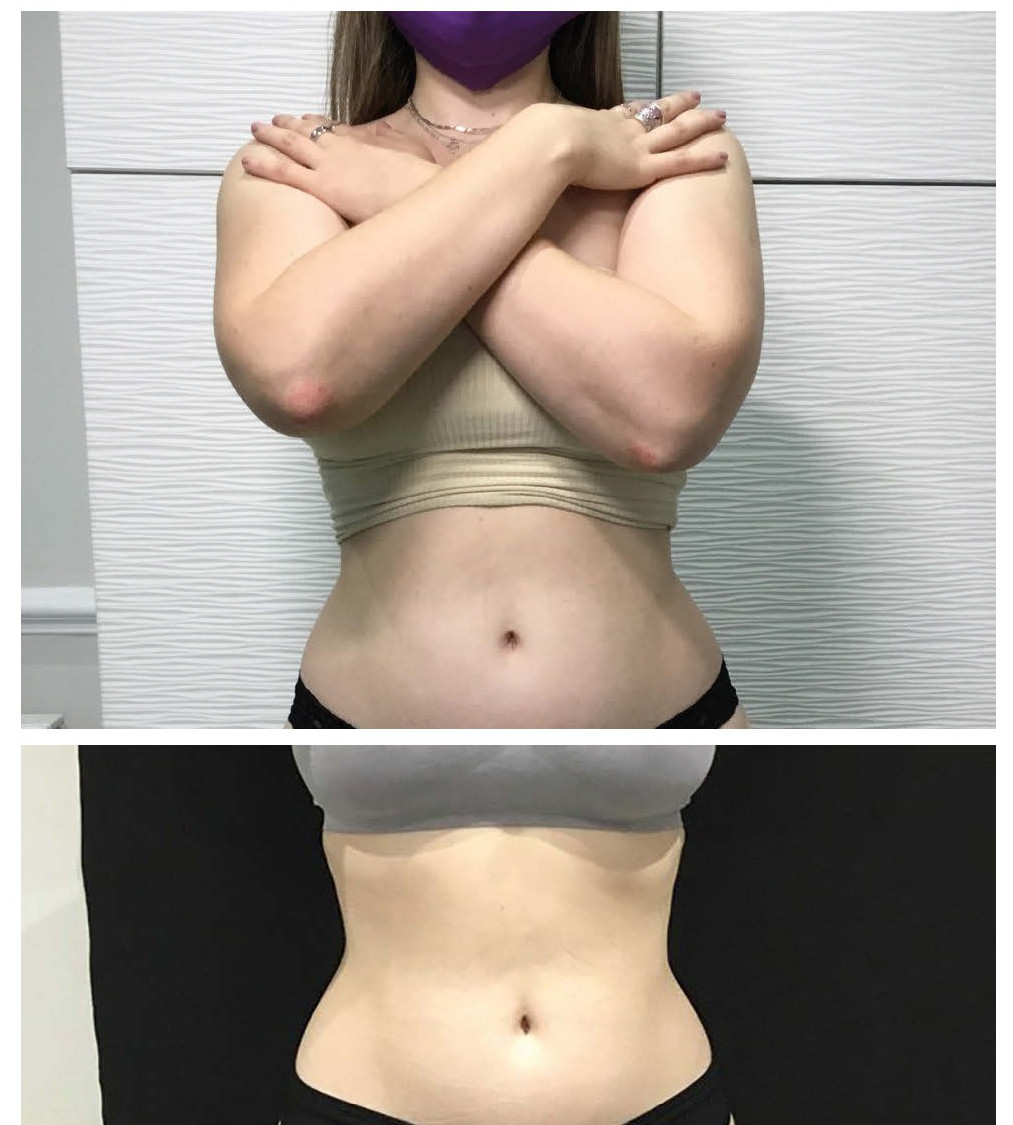TREATMENT REVIEW
Flex those muscles
Georgia Seago gets strapped in to Cutera’s TruSculpt Flex to see if EMS lives up to the hype
THE LOWDOWN
Despite electro-muscle sculpting technology taking the non-invasive body-contouring market by storm over the last year or so, I had never actually tried the tech myself. I was invited for a course of four sessions with Cutera’s TruSculpt Flex at Dr Preema Vig’s London clinic, not long after she launched the device in the summer. TruSculpt Flex is targeted to tone muscle and burn fat using multi-directional stimulation via electro-muscle stimulation, the method of which is unique to this device, according to Cutera, and unlike other similar devices that use non-specific or single-direction energy. It targets specific muscle groups through applicators that can be attached to the stomach, buttocks and thighs and placed specifically depending on each patient’s needs. Several areas can be treated at once if desired.
There are three mode options that practitioners can customise in each patient’s treatment:
• Prep mode creates a twisting motion to warm up, stretch the muscles and slowly build a tolerance to muscle contractions
• Tone mode contracts the muscles, holds them to the point of exhaustion and then relaxes to increase strength and enhance endurance
• Sculpt mode delivers fast, deep, sequential contractions of the muscles to build muscle mass and increase basal metabolic rate. Over the duration of a typical 45-minute treatment, the brand says the device replicates 54,000 crunches. A white paper published by Cutera explains TruSculpt Flex’s action as such: “Similar to strength training, during the treatment muscle fibres undergo trauma or microscopic tears, and then cells attempt to repair the damage which results in increasing muscle size and strength. This repair process begins after each treatment and involves releasing hormones, such as testosterone, to activate cell recovery, form new blood capillaries, repair muscle fibres, and manage the gain in muscle mass.”
“The amount of released growth hormones depends on the intensity of the activity, hormone levels (which is higher in men, individuals with genetically more muscle mass, or individuals who frequently work out), and the metabolism level which helps convert amino acids into protein to bulk up muscles.”
“I was amazed when on my fourth and final session I found the treatment completely comfortable and managed an almost 10% increase in my HIIT intensity”
THE EXPERIENCE
Before my first treatment, senior aesthetician Jenna Cole consulted me about my desired results and fitness level and weighed me. I wanted to have the treatment on my stomach, which although not a huge problem area for me, could do with some toning and muscle definition, especially on the notoriously tricky lower abs area. As I’m moderately active from regular Pilates classes and running around London, Jenna decided my treatments would mostly comprise the Tone mode, and explained that even people who have never exercised before could be suitable for treatment depending on their medical history, by focusing the treatment more on the Prep mode to slowly start to activate the muscles and build tolerance. The device is also insensitive to the amount of subcutaneous adipose tissue lying over the skeletal muscle, according to the white paper.

Before and immediately after the fourth session
The first treatment was more uncomfortable than I expected, but manageable. Some of this was probably shock at the strange new sensations my abs had never felt before. Around halfway through the treatment I could feel my muscles fatiguing just like in ab workout, but the difference here is that you keep going. That’s probably what I ended up liking the most about the treatment; that you’re doing the most intense ab workout of your life for 45 minutes straight while lying down and not breaking a sweat.
Jenna quickly learned that I was sensitive to intensity increases, and I did ask her to turn it down a touch throughout my first and second treatment. She said that most patients find the last 15 minutes of the treatment the toughest, when the “HIIT” session kicks in, relentlessly and deeply contracting the muscles. However, I struggled the most with a particular sequence around 25 minutes in, which felt to me like intense pricking all over my stomach. That being said, with each treatment I built up gradual resistance to the intensity, averaging a good few percentage increases at each fiveminute mark compared to the previous session.
I felt completely fine after each treatment and went about the rest of my day. I was advised to drink lots of water and that my appetite may increase that evening, but I didn’t really experience this. After the first two treatments I felt the muscle soreness you’d expect after an intense workout, but it felt like my abs were thanking me for paying them so much attention.
THE VERDICT
I was amazed when on my fourth and final session I found the treatment completely comfortable and managed an almost 10% increase in my HIIT intensity. The difference in how my muscles had adapted and strengthened since my first treatment was obvious, and around three weeks after my last treatment I can feel that my core is somewhat stronger. Workouts feel more manageable and I’m sure my abs are recovering quicker. At the time of writing I haven’t yet had my follow-up, but I can see that my stomach is a little flatter and the muscles do appear more toned. The best results are usually seen 8 to 12 weeks following the last session, so I’ll update readers in a later issue to give a more accurate picture of how the treatment worked for me.